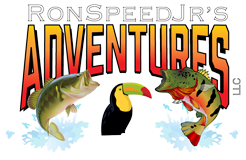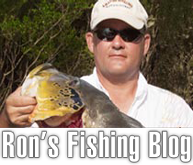 This week’s fishing tips is about when fish bite and when they don’t bite and the reasons why they do both. The reasons why fish do what they do regarding feeding is both simple and very complex. The simple answer to why fish feed is that they feel good and the reason they don’t feed is that they don’t feel good. That is simple enough.
This week’s fishing tips is about when fish bite and when they don’t bite and the reasons why they do both. The reasons why fish do what they do regarding feeding is both simple and very complex. The simple answer to why fish feed is that they feel good and the reason they don’t feed is that they don’t feel good. That is simple enough.
However if we explore that simple reasoning and get into why they feel good or bad, then we began to get into a more complex situation with so many variables it would look like a spider web if we drew it up on paper. I will attempt today to cover all the reasons and variables so you may have a better insight as to when fish will bite or not bite before you leave the house to go fishing.
I have heard all my life that the best time to go fishing is WHEN YOU CAN. However, for those of us that can go almost any day we wish to go, I would say the best time to go fishing is WHEN THE FISH ARE BITING.
Let’s get to it and see what we come up with about feeding and not feeding. Fish will bite when they feel good, which means that conditions in their watery environment are good and are STABLE. This means the water temp is good for them, the amount of oxygen in the water is good, the water clarity is good, the barometric pressure is good, the water level is normal for the fish. In other words everything in their environment is constant and not changing.
If we are to simplify all of these factors so we can use them to our advantage we must have a few simple things we can observe without going to the lake checking all these things out before we decide to fish or not fish.
All across the USA fishermen began to break out the fishing tackle at the first sign of spring. In most parts of our great country spring means weather changes like crazy. Cold fronts, warm fronts, high winds, there are many changes in the weather as winter keeps fighting to hang on and spring & summer are fighting back. But spring means fish come shallow to spawn and if conditions are right we can catch a lot of fish during this time of the year.
One of the things I look to if I am going spring time fishing is wind direction and barometric pressure. Fish have air bladders and the barometric pressure is a big influence on how they feel. Living in Texas our NORMAL PREVAILING WINDS are south off the Gulf of Mexico. Remember this is a normal wind. If the wind is in any other direction such as north, east, west then that is not normal. Remember fish like things to be NORMAL and Stable. If you have winds changing direction every day then you will have a barometer that is going up and down like a yo-yo. We are looking for a stable barometer.
Almost all the lakes in the USA are built for water consumption and the water levels don’t normally change drastically except in flooding conditions. If the people operating the gates at the dam open up the gates, the water level in the lake will began to fall and that is very bad for fishing. Why? Because it is something that is not normal to the fish. So falling water here in the States is very bad on the bite…. but in Mexico it is great for the bite. How can that be? In Mexico almost all lakes are built for irrigation not water consumption. That means the water levels are constantly being drawn down over months and months to supply water to farmers for their crops. So falling water means something is normal and is good for the bite.
One of the reasons the fish bite so good in Mexico and grow so big is that the weather is almost always constant with the same wind direction, same barometric pressure, etc. Two seasons ago we had our worst year of fishing on Lake El Salto since the lake was built. Why? Well, 2 hurricanes hit the lake 2 weeks apart. The rising water was 4 feet deep in our lakeside camp. Everything was flooded by a 40ft rise. It took several months for the water to go back to normal. The bass just didn’t feel good as conditions were not stable and constant in their environment This past season the lake was back to normal and the fish felt good and bit like crazy.
Let’s move on to another variable and take a look. Water clarity: Many fisherman feel fish especially bass wont bite in muddy water. It goes back to what is the normal water clarity. Some lakes stay muddy all the time and that is normal so the fish do bite in muddy water. However if a lake is normally clear and then something turns the water muddy, then that again is not normal and the fish do slow down on feeding until some of the dirt settles out of the water.
I hope that my explanation of fish feeding habits is of some help to you. These are just personal opinions I have formed over a 63-year fishing span. Some of my ideas may well be disputed by some fishermen which I think is just great. Since fishing is such a great variable itself there will be as many different opinions as we have fishermen. I guess that’s why our sport is the finest activity on the planet and why we enjoy it so much.
Good luck on your next fishing trip and wear that lifejacket.
Let us know how we can help YOU find the monsters when they’re biting!


